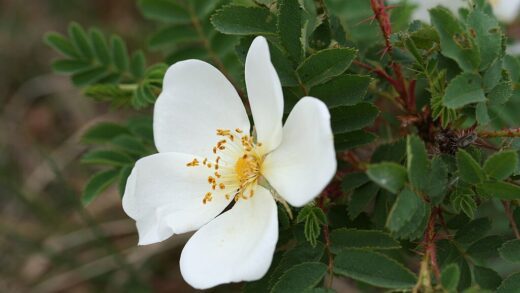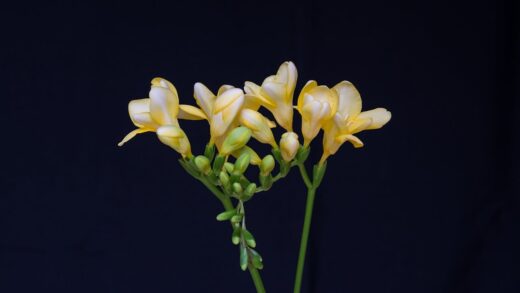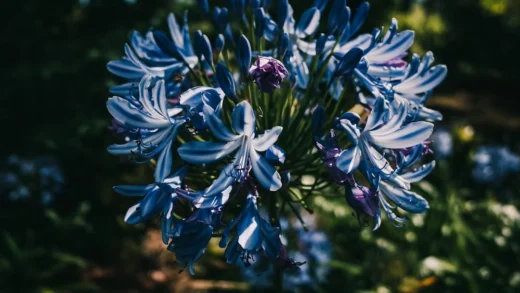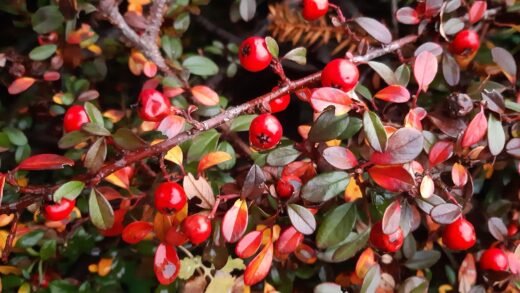Strategic pruning and trimming are essential horticultural practices that transform a dahlia from a potentially unruly plant into a well-structured, highly productive flowering machine. While it may seem counterintuitive to cut parts off a plant you want to grow, these techniques are designed to channel the plant’s energy in a more efficient and desirable way. By making precise cuts at specific stages of growth, you can encourage a bushier habit, increase the number of flowering stems, and ultimately harvest a greater abundance of high-quality blooms. Mastering the arts of pinching, disbudding, and trimming is a key step towards cultivating truly spectacular dahlias.
The first and arguably most important pruning technique for dahlias is known as ‘pinching’ or ‘stopping’. This is done early in the growing season when the plant is still young and relatively small, typically when it has reached a height of about 20 to 30 centimeters (8 to 12 inches) and has developed three to four sets of true leaves. The process involves removing the very top of the main growing stem, just above a set of leaves. This simple act removes the terminal bud, which produces hormones that suppress the growth of the side shoots below it.
The effect of pinching is almost immediate. With the dominant central stem removed, the plant redirects its energy to the two side shoots located in the leaf axils just below the cut. These two shoots will then grow out to become two new main stems. This process effectively encourages the plant to branch out low down, creating a much fuller, bushier, and more stable plant structure. A pinched plant will produce significantly more flowering stems than an unpinched plant, which would otherwise grow as a single, tall stalk.
While pinching does slightly delay the appearance of the very first flower of the season, the long-term benefits far outweigh this minor drawback. The resulting multi-stemmed plant will produce a much greater quantity of blooms over the entire season. The flowers will also be borne on longer, more useful stems, which is particularly advantageous for those growing dahlias for cut flower arrangements. This foundational pruning sets the stage for a more robust and floriferous plant.
The technique of pinching
Pinching is a straightforward but impactful technique that should be performed on almost all dahlia varieties, with the possible exception of some naturally low-growing, single-flowered bedding types. The ideal time to perform this task is when the young dahlia plant has established itself and is actively growing. Wait until the plant has produced at least three to four pairs of leaves. This ensures that the plant is strong enough to respond well to the pruning and has sufficient nodes from which to produce new branches.
To pinch the dahlia, locate the uppermost set of leaves on the central stem. You will see the main growing tip emerging from between this pair of leaves. Using your thumb and forefinger, a pair of clean, sharp scissors, or secateurs, simply snip or pinch off this central shoot. It is important to make a clean cut and to remove only the very top section of growth, right above the leaf node. You are not trying to remove a large portion of the plant, just the dominant growing tip.
After you have made the cut, the plant will begin to channel its growth hormones into the lateral buds located at the points where the leaves join the stem. The two buds directly below your cut will be the first to develop, and you will soon see them begin to grow into strong new stems. These stems will, in turn, grow and produce their own leaves and, eventually, flower buds. The result is a plant that is not only bushier and more attractive in form but also far more productive in terms of flower numbers.
For gardeners who want an even bushier plant or a succession of blooms, a second pinch can sometimes be performed. After the two new main stems have grown and developed a few sets of leaves of their own, you can pinch the tips of these stems as well. This will cause the plant to branch out even further, creating an even fuller plant. However, each time you pinch, you delay the flowering time, so this is a trade-off that needs to be considered based on your specific goals and the length of your growing season.
Disbudding for larger blooms
Disbudding is a more specialized pruning technique primarily used by gardeners who are growing dahlias for exhibition or who simply want to produce the largest possible flowers on each stem. This method is particularly effective for the large-flowered ‘dinnerplate’ varieties. The principle behind disbudding is to concentrate all of the energy of a single flowering stem into the development of just one flower, rather than allowing it to be divided among several.
Dahlia flower buds typically form in clusters of three at the end of a stem. There will be a central, terminal bud, which is usually the largest, and two smaller, secondary buds on either side, located in the leaf axils just below it. To disbud, you carefully remove the two smaller, secondary buds, leaving only the central bud to develop. It is best to do this when the buds are still quite small, about the size of a pea, as they are easier to remove without damaging the main bud. Simply pinch them off gently with your fingers.
By removing the competition from the side buds, you ensure that all the nutrients and energy being sent up that stem are directed solely into the remaining terminal bud. This results in a flower that is significantly larger, often with a more perfect form and stronger stem, than if it had been left to grow naturally. This is the secret behind the enormous, prize-winning blooms often seen at flower shows.
It is important to understand that disbudding is a trade-off between flower size and flower quantity. Each time you disbud a stem, you are sacrificing two potential flowers for the sake of one, larger one. For this reason, it is not a technique that is typically used by gardeners whose primary goal is to have a large quantity of flowers for garden display or for casual bouquets. However, for those seeking to achieve the most spectacular, show-stopping individual blooms, disbudding is an essential practice.
Trimming for air circulation and health
Beyond the initial pinching and the specialized practice of disbudding, general trimming and foliage removal throughout the growing season can play an important role in maintaining the health and vigor of your dahlia plants. As the plant grows and becomes denser, the lower parts can become heavily shaded and overcrowded. This can lead to poor air circulation around the base of the plant, creating a damp environment that is ideal for the development of fungal diseases like powdery mildew and botrytis.
To improve air circulation, it is a good practice to selectively remove some of the lower leaves from the main stems, especially those that are touching the ground or are beginning to turn yellow. This practice, sometimes referred to as ‘stripping’ or ‘de-leafing’, opens up the structure of the plant, allowing air to flow more freely through the foliage. This helps the leaves to dry more quickly after rain or watering, making conditions less favorable for disease. Use clean secateurs to make your cuts, trimming the leaves off flush with the main stem.
This type of trimming is particularly important for dahlias grown in humid climates or for those planted closely together in beds. As a general rule, you can remove the leaves from the bottom 30 centimeters (12 inches) of the plant’s main stems. This not only improves air circulation but can also make it more difficult for pests like slugs to climb the plant and can make it easier to water the base of the plant without wetting the foliage.
Throughout the season, you should also be vigilant about removing any leaves that appear damaged, diseased, or are heavily infested with pests. This sanitary pruning helps to prevent problems from spreading to the rest of the plant. By regularly trimming and tidying your dahlias, you not only improve their health and resilience but also create a cleaner, more attractive appearance in the garden, allowing the beautiful blooms to be the true focus of attention.
Deadheading to prolong flowering
Deadheading is the crucial, ongoing task of removing spent flowers from the plant, and it is the single most effective thing you can do to encourage your dahlias to bloom continuously throughout the season. The primary biological purpose of a flower is to produce seeds to ensure the next generation. Once a flower has been pollinated and begins to fade, the plant diverts a significant amount of its energy into developing the seed head. By removing the faded bloom before it sets seed, you interrupt this process.
This interruption effectively tricks the plant into thinking it has not yet succeeded in its reproductive mission. In response, it will channel its energy back into producing more flowers in a continued attempt to create seeds. This simple act of removing old blooms can dramatically extend the flowering period of your dahlias, ensuring a vibrant display of color in your garden from mid-summer right up until the first frosts of autumn. A dahlia that is not deadheaded will often stop blooming much earlier in the season.
The technique for deadheading is important. It is not enough to simply pull off the dead petals. You must remove the entire flower head along with its stem. Trace the stem of the spent flower back to the point where it meets a main stem or a set of leaves. Make a clean cut just above a leaf node or a developing side bud. This encourages new, healthy growth from that point, which will often lead to the development of new flowering shoots.
It can sometimes be tricky to distinguish between a spent dahlia flower and a new, unopened bud, as they can look similar from a distance. The key difference is their shape: a new bud is typically rounded and firm, while a spent flower head that is developing seeds will be more conical or pointed in shape and will feel soft or hollow when squeezed. Taking the time to deadhead your plants regularly, perhaps every few days, is one of the most rewarding tasks in dahlia care, paying you back with a seemingly endless supply of beautiful blooms.

















